I am creating a device which uses IR LEDs to illuminate the human eye, while an IR camera records the pupil dilation.
From my research, I see that there are two standards which are related to the wavelengths (950nm) of my IR LED. These are:
- "IEC 62471:2006 Photobiological safety of lamps and lamp systems"
- "IEC 60825-1 SAFETY OF LASER PRODUCTS - PART 1: EQUIPMENT CLASSIFICATION AND REQUIREMENTS"
If I use the 1st standard the equation is:
- My exposure limit is: 18000.7^-0.75 = 4182.63 W/m²
- And the 40 IR LEDs that I have produce: 40 * 0.011W/sr/0.120² = 30.55 W/m² (at a distance of 120mm)
Therefore, this is well below the limit.
But if I follow Standard 2 for "Maximum permissible exposure (MPE) at the cornea for direct exposure to laser radiation", the equation is this:
where
and C6 = 1 (I am assuming from reading the standard)
- MPE = 18*7^(0.75)10^(0.002(950-700)) = 244.96 J/m² = 24.49 mJ/cm²
- Q = 24.49π(0.35²) = 9.427 mJ (Assuming worse case: 7mm pupil)
- Power Φ = 9.427 / 7 sec = 1.346 mW
and the total radiant flux of 1 of the LEDs is: 35 mW -> This is obviously higher than my calculated limit (assuming that my calculations were correct)
Therefore, my question is simply: Which of these standards does a IR LED (or array of IR LEDs) need to satisfy?
Thank you.


